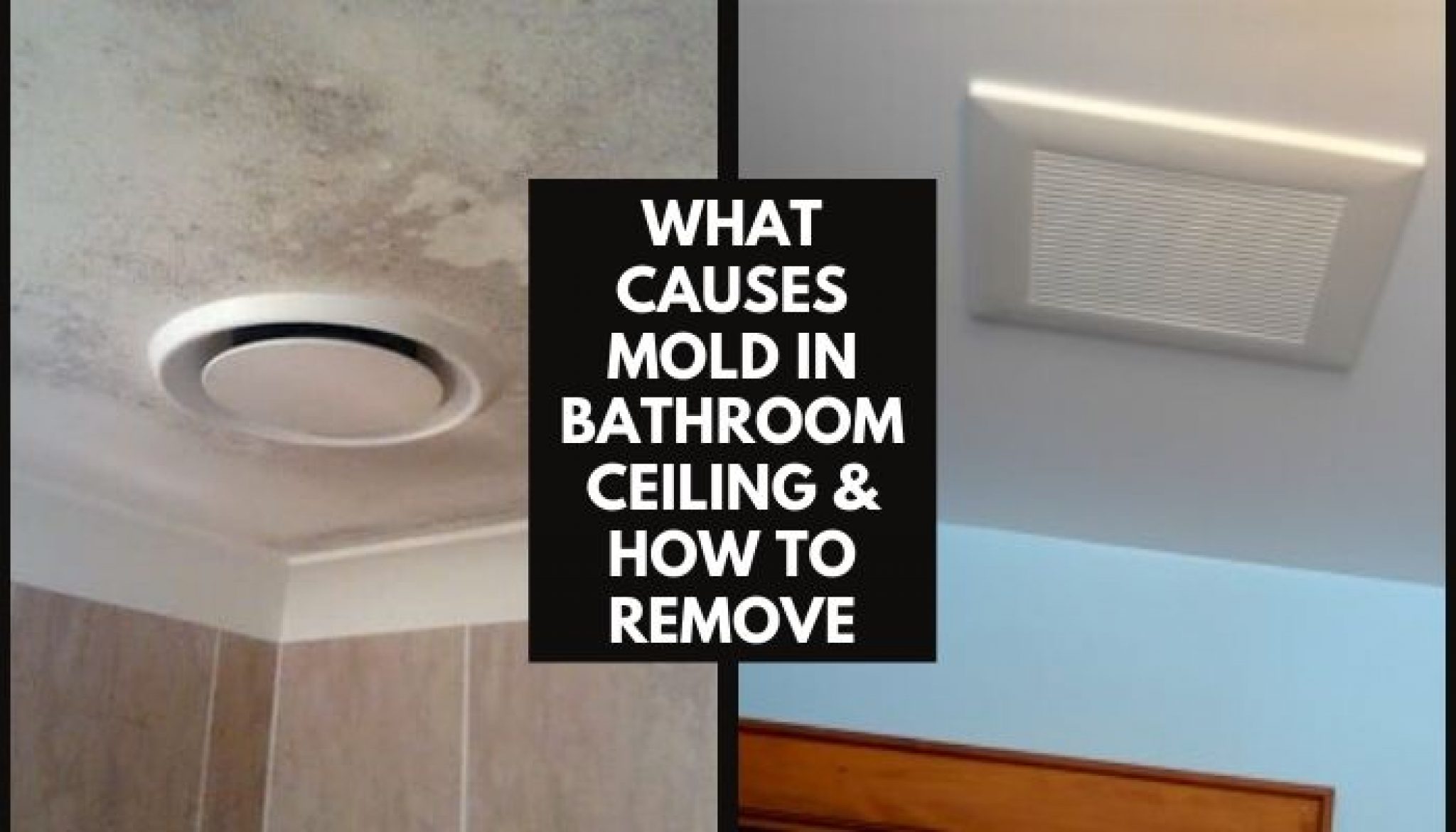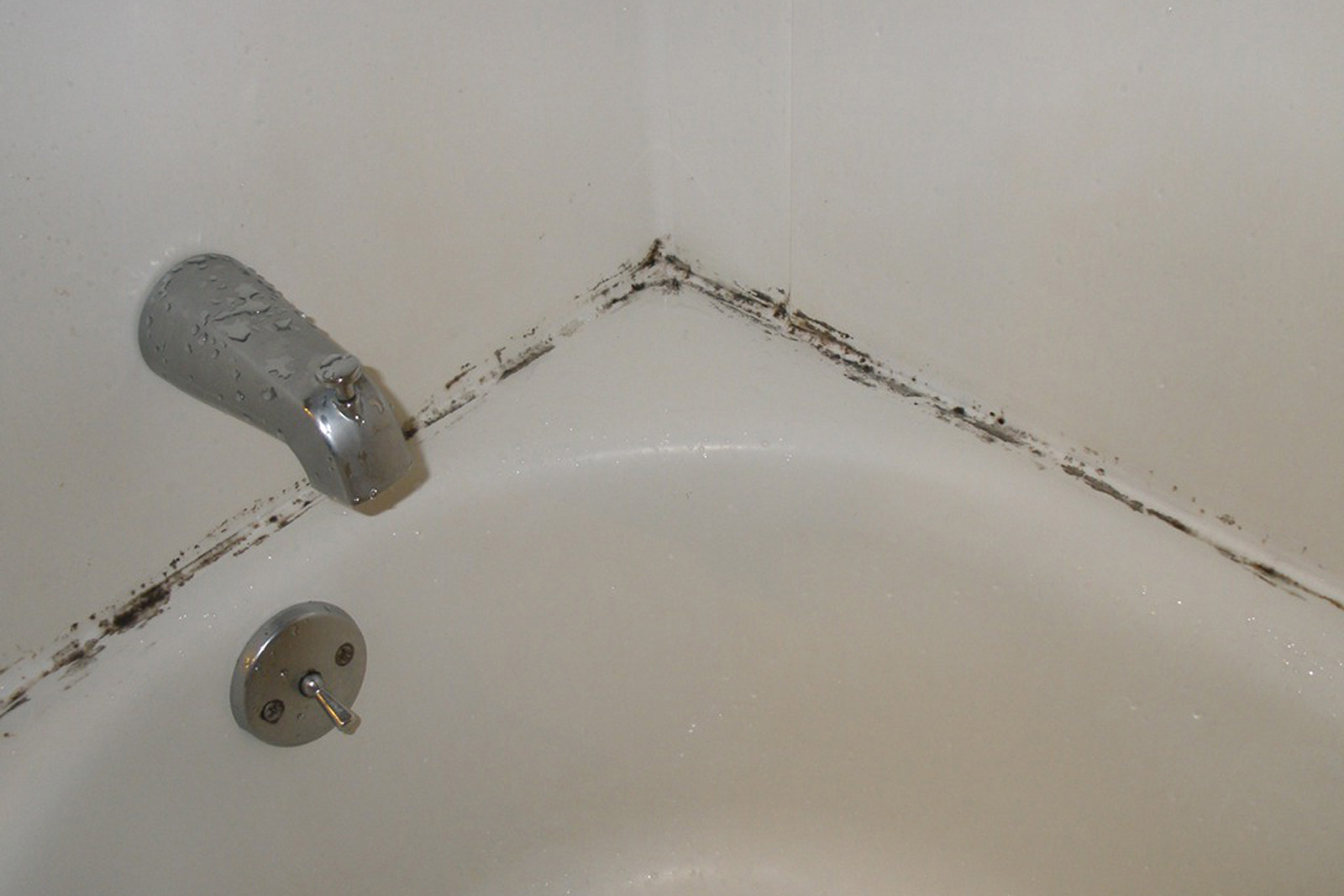Identifying the Source of Moisture

Right, so before you even think about tackling that black mold, you need to figure out why it’s there in the first place. It’s like, you can’t just slap a plaster on a broken leg without figuring out what caused the break, innit? So, let’s get to the bottom of this dampness situation.
How to remove black mold from bathroom ceiling – Black mold, that nasty fella, thrives in damp environments. Think of it like a party animal, it loves a good moisture sesh. So, you need to figure out what’s giving it that party vibe. Common culprits are leaky pipes, condensation, and even poor ventilation. It’s like, if you don’t give your bathroom enough fresh air, it’s gonna get all sweaty and attract the moldy crew.
Inspecting for Leaks
Now, this is where you gotta get your detective hat on. First things first, check your pipes. Are they old and creaky? Do they have any drips or leaks? If you’re not sure, you can use a damp cloth to check for damp spots around the pipes. It’s like, if you find a wet patch, you’ve got a leak. If you suspect a leak in your pipes, you’ll need to get a plumber in to fix it.
Next up, you gotta check the shower or bath. Is the sealant around the tub or shower cracked or missing? Is the grout in the tiles looking a bit rough? If you’ve got a crack or missing sealant, water can easily seep through and cause dampness. It’s like, if you’ve got a hole in your bucket, it’s gonna leak.
Finally, check the roof. Are there any leaks or cracks? If you’ve got a leaky roof, you’re gonna have a damp ceiling. It’s like, if your roof is letting in rain, you’re gonna have a soggy bathroom.
Checking for Condensation
Now, let’s talk about condensation. Condensation happens when warm, moist air comes into contact with a cold surface. In your bathroom, this can happen on the ceiling, walls, or even the windows. It’s like, if you’ve got a cold drink in a hot room, it’s gonna sweat.
If you suspect condensation, you can check for signs of dampness on the walls or ceiling. You can also check the windows for condensation. If you see condensation, it means that the air in your bathroom is too humid.
Addressing the Moisture
Right, so you’ve found the source of the moisture, now what? Well, you need to address it before you even think about tackling the mold. It’s like, if you don’t fix the leak, the mold’s just gonna come back.
If you’ve got a leak, you need to get it fixed ASAP. If it’s condensation, you need to improve the ventilation in your bathroom. This could mean using an extractor fan, opening a window, or even just taking shorter showers.
Preparing for Removal

Right, so you’ve sussed out where the damp’s coming from, so now it’s time to get your gear on and prep for the big mold removal mission. Black mold can be a bit of a nasty business, so it’s important to take some safety precautions before you start.
Safety Precautions, How to remove black mold from bathroom ceiling
It’s important to take precautions when dealing with black mold as it can be harmful to your health. You should always wear appropriate personal protective equipment (PPE) and ensure adequate ventilation in the bathroom during the removal process.
- Avoid touching or disturbing the mold with bare hands. This can release spores into the air and increase your risk of exposure.
- Make sure to wear a respirator mask that is rated for mold spores, to protect yourself from inhaling them.
- Avoid using harsh chemicals or bleach, as these can damage the surface and release more mold spores into the air. Opt for eco-friendly solutions that are safe for you and the environment.
- Keep children and pets away from the area while you’re working.
Personal Protective Equipment
You’ll need to kit yourself out with the right gear to protect yourself from mold spores. Here’s what you’ll need:
- Respirator Mask: This is essential for protecting your lungs from mold spores. Look for a respirator mask that is rated for mold spores (N95 or higher). You can get these from hardware stores or online.
- Gloves: Wear rubber or nitrile gloves to protect your hands from mold spores. You can use disposable gloves or reusable gloves that can be washed thoroughly afterwards.
- Eye Protection: Wear safety goggles or glasses to protect your eyes from mold spores. Make sure the glasses seal tightly around your face.
- Protective Clothing: Wear long sleeves and long pants to cover your skin and prevent contact with mold spores. You can also wear a disposable coverall to protect your clothes.
Ventilating the Bathroom
Good ventilation is key when dealing with black mold. You need to make sure the air is circulating properly to prevent mold spores from accumulating in the air.
- Open all windows and doors in the bathroom to allow fresh air to circulate.
- Use a fan to exhaust the air out of the bathroom. This will help to remove mold spores from the air.
- If you’re using a cleaning solution, make sure to ventilate the bathroom well to avoid inhaling fumes.
Removal Methods: How To Remove Black Mold From Bathroom Ceiling

Alright, so you’ve identified the source of the damp and prepped your bathroom ceiling for a mold battle. Now, it’s time to get down to the nitty-gritty of removing that nasty black mold.
There are a few different ways to tackle this, and the best approach depends on the severity of the mold infestation and your personal preference.
Cleaning Solutions for Black Mold Removal
The right cleaning solution is key to effectively removing black mold. Here’s a breakdown of some popular options and their pros and cons:
- Bleach: The OG mold killer. It’s strong, cheap, and readily available. Just make sure you mix it with water (1 part bleach to 10 parts water) and wear protective gear like gloves and a mask. Be careful, though, as bleach can damage some surfaces.
- Borax: A natural alternative to bleach, borax is a powerful mold killer and is less harsh on surfaces. It’s also a good deodorizer, so it can help get rid of any funky smells.
- Vinegar: A safe and eco-friendly option, vinegar can be effective against mold, especially when combined with baking soda. It’s less harsh than bleach and can help neutralize odors.
- Tea Tree Oil: This natural antifungal agent can be diluted with water and sprayed onto moldy areas. It’s a good option for those with sensitive skin or who prefer a natural approach.
Scrubbing Tools for Black Mold Removal
Once you’ve chosen your cleaning solution, you’ll need the right tools to scrub away the mold.
- Scrub Brush: A stiff-bristled scrub brush is perfect for tackling stubborn mold on hard surfaces. Make sure it’s specifically designed for cleaning mold and is easy to disinfect.
- Sponge: A damp sponge can be used to apply cleaning solutions and gently wipe away mold. Opt for a sponge that’s non-abrasive to avoid damaging the ceiling surface.
- Wire Brush: If you’re dealing with mold in grout or textured surfaces, a wire brush can be helpful for getting into those nooks and crannies. Be careful not to damage the surface.
Specialized Equipment for Black Mold Removal
For larger or more severe mold infestations, specialized equipment can be helpful.
- HEPA Vacuum: A HEPA vacuum is designed to capture tiny particles, including mold spores. This can help prevent the spread of mold during the cleaning process.
- Mold Removal Sprayer: A sprayer can be used to apply cleaning solutions to the moldy area. It’s a good option for reaching hard-to-reach areas or applying a consistent layer of solution.
- Air Purifier: An air purifier can help remove mold spores from the air after you’ve cleaned the moldy area. This can help prevent the mold from returning.
Safe and Effective Black Mold Removal
Once you’ve gathered your supplies, it’s time to get to work. Here’s how to safely and effectively remove black mold from your bathroom ceiling:
1. Protect Yourself: Don your protective gear, including gloves, a mask, and eye protection.
2. Ventilate the Area: Open windows and doors to ensure good ventilation.
3. Apply Cleaning Solution: Mix your chosen cleaning solution according to the instructions. Use a sponge or sprayer to apply the solution to the moldy area, making sure to saturate the mold completely.
4. Scrub Away the Mold: Use a scrub brush or sponge to gently scrub the mold. Work in small sections, paying attention to any crevices or corners.
5. Rinse Thoroughly: Rinse the area with clean water to remove any remaining cleaning solution and mold.
6. Dry the Area: Use a dry cloth or towel to dry the area thoroughly.
7. Dispose of Materials: Properly dispose of all cleaning materials and contaminated items.
8. Monitor the Area: Keep an eye on the area for any signs of mold regrowth. If you see any mold, repeat the cleaning process.
Remember, it’s important to address the source of the moisture that caused the mold growth in the first place. Otherwise, the mold may return.
